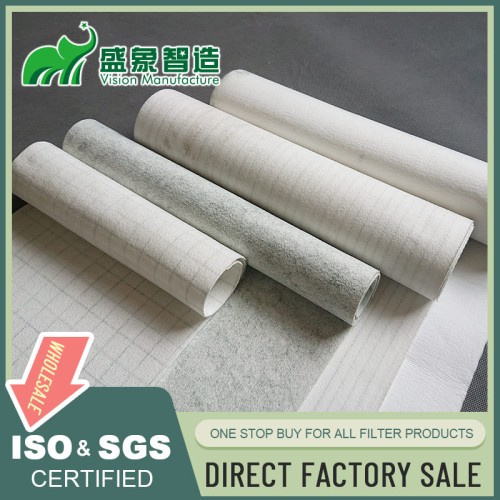
How Do Fabric Roll Cutting Machines Enhance Precision in Filter Media Production?
I. Introduction
Precision cutting is crucial in the production of filter media, directly impacting the efficiency and quality of the final filtration products. Fabric roll cutting machines play a pivotal role in this process, offering advanced technology to ensure precise cuts that meet stringent industry standards. This article explores the importance of these machines in the filtration industry, their impact on production efficiency, and the overall quality of filter media.
II. Types of Fabric Roll Cutting Machines
- Rotary Blade Cutters: Utilize a rotating blade to slice through fabric, ideal for high-volume production with consistent results.
- Ultrasonic Cutting Systems: Employ high-frequency vibrations to cut materials, reducing fraying and sealing edges simultaneously.
- Laser Cutting Machines: Provide high precision and versatility, capable of cutting complex shapes without direct contact with the fabric.
- Water Jet Cutters: Use high-pressure water streams, often mixed with abrasives, suitable for cutting a wide range of materials including thick and layered fabrics.
III. Key Components and Features
- Cutting Mechanisms: The core technology that defines the cutting precision and capabilities of each machine type.
- Feed and Tension Control Systems: Ensure the fabric is fed consistently into the machine to avoid misalignment and material waste.
- Measurement and Alignment Tools: Critical for achieving accurate cuts according to specified dimensions and patterns.
- Control Interfaces and Automation: Facilitate user control and may include programmable logic controllers (PLCs) for automated cutting operations.
IV. Applications in Filter Media Production
- Cutting Filter Cloths and Fabrics: Essential for producing standard and custom filter media.
- Sizing Non-Woven Materials: Precisely cuts non-woven materials used in various filtration applications.
- Preparing Filter Bag Components: Ensures that parts are cut to exact specifications for efficient assembly.
- Custom Shape Cutting for Specialty Filters: Allows for the production of filters with unique shapes and sizes, tailored to specific customer requirements.
V. Performance Characteristics
- Cutting Precision and Accuracy: Machines are designed to deliver clean and precise cuts, crucial for maintaining the integrity of the filter media.
- Speed and Throughput Capabilities: High cutting speeds increase production rates, directly impacting productivity.
- Material Handling Versatility: Capable of handling a variety of materials, from lightweight fabrics to heavy-duty composites.
- Repeatability and Consistency: Ensures that every cut is consistent with the last, crucial for high-quality production runs.
VI. Operational Considerations
- Machine Setup and Calibration: Proper setup and regular calibration are essential to maintain cutting accuracy.
- Material Loading and Positioning: Correct material handling is crucial to prevent errors and material waste.
- Pattern Programming and Optimization: Advanced software helps optimize cutting patterns to maximize material utilization and minimize waste.
- Maintenance and Cleaning Procedures: Regular maintenance is necessary to keep the machines operating at peak performance.
VII. Safety Features and Compliance
- Operator Safety Mechanisms: Include emergency stops, guards, and other features to protect operators.
- Dust and Debris Management: Systems to manage and collect debris and dust generated during cutting, maintaining a clean work environment.
- Electrical and Mechanical Safety Standards: Adherence to industry standards ensures the safety and reliability of machinery.
- Workplace Safety Regulations: Compliance with local and international safety regulations protects workers and supports a safe production environment.
VIII. Cost-Benefit Analysis
- Initial Investment Considerations: Evaluates the upfront cost against the machine's expected lifespan and performance.
- Productivity Improvements: Assesses how the machine enhances production efficiency and throughput.
- Material Waste Reduction: Reduces costs by minimizing waste through precise cutting.
- Labor Cost Savings: Automating cutting processes reduces the need for manual labor, lowering operational costs.
IX. Integration with Production Processes
- Compatibility with Upstream Processes: Ensures that machines integrate seamlessly with other production stages.
- Downstream Handling of Cut Materials: Facilitates the efficient transfer of materials to subsequent manufacturing stages.
- Integration with Inventory Management Systems: Links cutting operations with inventory systems to optimize material usage.
- Quality Control and Inspection Integration: Incorporates cutting stages into quality assurance protocols to ensure product standards are met.
X. Innovations and Future Trends
- Advanced Cutting Technologies: Continual improvements in cutting technology enhance precision and efficiency.
- AI and Machine Learning in Cutting Optimization: Utilizes data-driven algorithms to optimize cutting patterns and reduce waste.
- IoT Integration for Predictive Maintenance: Monitors machine health in real-time, predicting maintenance needs before breakdowns occur.
- Sustainable and Energy-Efficient Designs: Focuses on reducing the environmental impact of production processes.
XI. Case Studies and Success Stories
- Improving Filtration Efficiency in Cement Plants: Demonstrations of how advanced fiberglass systems handle high dust loads.
- Solving Challenging Dust Issues in Metal Processing: Examples of customized solutions that address specific industry challenges.
- Enhancing Air Quality in Food Production Facilities: Case studies showcasing the impact on maintaining regulatory compliance and ensuring product safety.
XII. Conclusion
Fabric roll cutting machines are indispensable tools in filter media production, offering precision, efficiency, and adaptability. As the demand for high-quality filtration products grows, these machines continue to play a vital role in meeting industry needs, driving innovations that push the boundaries of what is possible in filter media manufacturing.
Leave a comment

